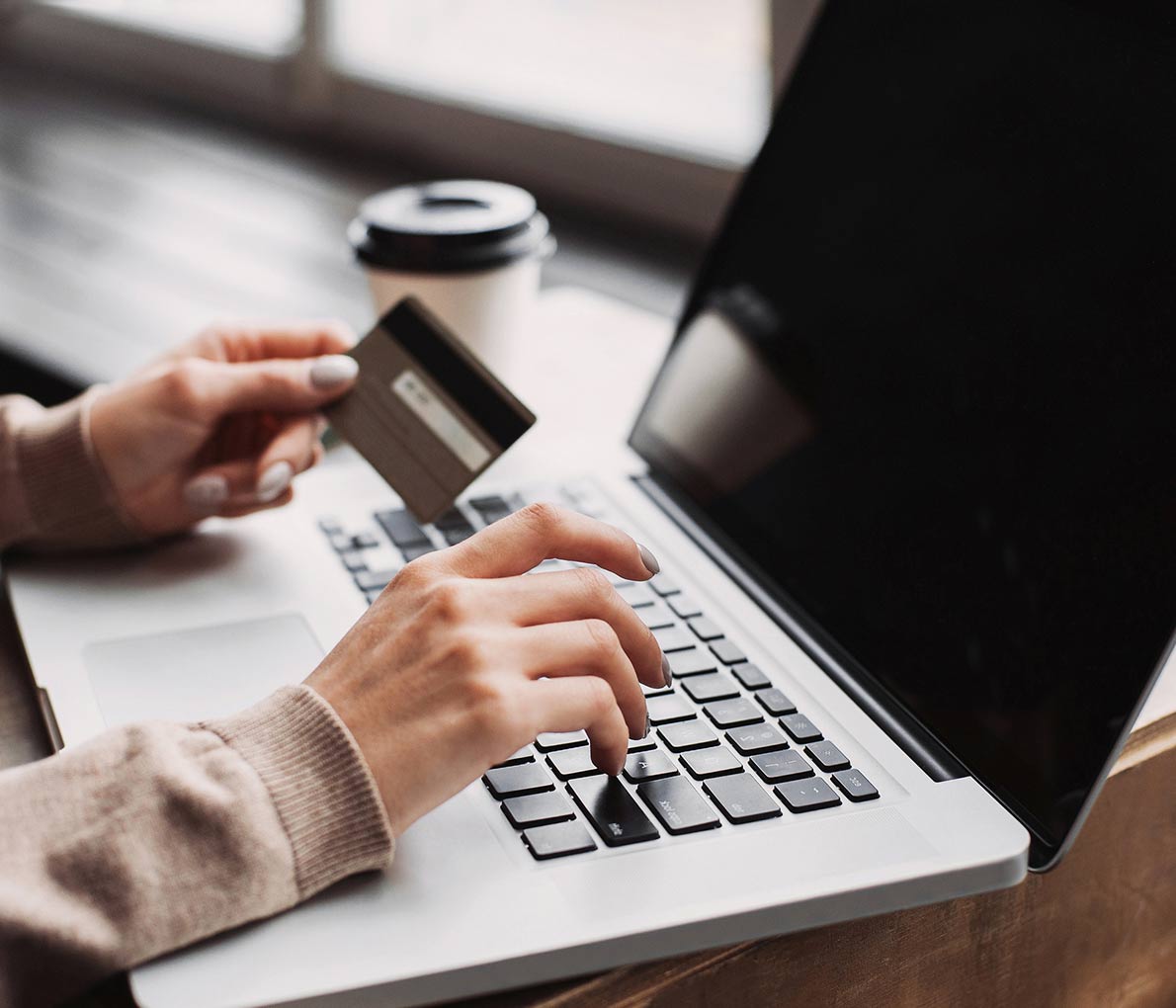Shopping Online More? Seven Tips to Prevent Identity Theft.


By Andrew Seale • Published April 13, 2020 • 4 Min Read
According to a 2018 survey of more than 2,000 Canadian internet users by Public Safety Canada, between 5% and 12% of Canadians have experienced identity theft and financial loss as a result of online activity. One of the reasons identity theft isn’t higher, despite the volume of online shoppers, is an increased digital literacy surrounding protecting data online. According to the report, eight out of ten Canadian internet users say they think it’s important to protect their personal information online.
While shoppers increase their online shopping literacy, scam artists and fraudsters evolve the ways they steal personal data. Here are seven tips to help you stay ahead in safeguarding your information while shopping online.
One of the simplest ways to help protect yourself while shopping online can be to make sure there’s an “https” and a lock icon in the address bar. Websites with “https” and the lock icon in the address bar use technologies like Secure Sockets Layer (SSL) or Transport Layer Security (TLS) to encrypt information sent through it, like your credit card number, making it more difficult for hackers to steal.
Free public WiFi can be the Holy Grail for comparison shoppers, but when it comes to buying online, convenience can quickly dissipate into disaster. Public WiFi can be unsecured or use shared passwords, making it easier for malicious hackers to capture your information before it’s encrypted, even if you are using an “https” site.
Another way they could steal your data is by setting up fake “free WiFi” accounts mimicking the store you’re in. It may look legitimate, but you’ll have no way of knowing if nefarious data collection is going on behind the scenes. If you’re planning on doing online banking or shopping, avoid public WiFi and wait until you’re home.
Online retailers often offer to save your information, “For easier checkout next time.” While this can be convenient and streamline the shopping process down the road, no retailer can be completely immune from data breaches. One way to protect your identity is to avoid setting up an account altogether and checkout, “As a guest.” When accounts are necessary, use a password that includes a long string of random letters, numbers, and symbols.
Credit cards, generally speaking, tend to provider better security for consumers when shopping online, especially when combined with identity protection. If a thief somehow steals your number and is able to use it, you can report the incident and have your credit card provider investigate. Identity protection services, like FirstReport, provides monitoring from both Equifax Canada and TransUnion Canada, so you get early warning of potential identity theft, no matter which credit bureau the warning originates from.
Like https, Verified by Visa offers another layer of protection, asking you to punch in your Verified by Visa password in order to confirm your identity. Many major retailers like Best Buy and IKEA include Verified by Visa protection for online shopping.
For those without credit cards, pre-paid Visa Gift Cards can be a game-changer; and they can be a good way to thwart scam artists. Like any gift card, funds can be loaded onto the pre-paid Visa with the added bonus that it can be used anywhere Visa cards are accepted including online, by phone or in-store. Once the funds are depleted the card is no longer functional; the cards also store no personal information and can be replaced if lost or stolen.
In addition to ensuring you’re secure while shopping, you should also keep tabs on how your card is being used so you can spot any suspicious transactions. While most cards offer alerts or notifications when a big purchase is made, be sure to review your account balance and credit card statements frequently (at least once a month) to ensure unknown transactions aren’t slipping by. Call your financial services provider if you notice anything “off” in your statements.
There’s no question online shopping is here to stay. But don’t let the convenience of buying online turn into the inconvenience and potential financial fallout of losing your identity.
Contact an RBC Insurance Advisor to learn more. Call 1-877-749-7224. Call 1-877-749-7224.
Get a free online quote* for coverage to protect you, your property, and your belongings from the unexpected.
*Home and auto insurance products are distributed by RBC Insurance Agency Ltd. and underwritten by Aviva General Insurance Company. In Quebec, RBC Insurance Agency Ltd. Is registered as a damage insurance agency. As a result of government-run auto insurance plans, auto insurance is not available through RBC Insurance in Manitoba, Saskatchewan and British Columbia.
This article is intended as general information only and is not to be relied upon as constituting legal, financial or other professional advice. A professional advisor should be consulted regarding your specific situation. Information presented is believed to be factual and up-to-date but we do not guarantee its accuracy and it should not be regarded as a complete analysis of the subjects discussed. All expressions of opinion reflect the judgment of the authors as of the date of publication and are subject to change. No endorsement of any third parties or their advice, opinions, information, products or services is expressly given or implied by Royal Bank of Canada or any of its affiliates.
Share This Article
Read This Next

Speak with an RBC Insurance Advisor: 1-888-925-0946 or Have an Advisor Call Me
Want to meet? Find an Advisor or Store